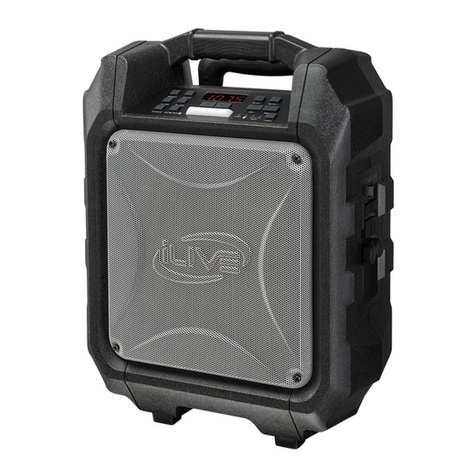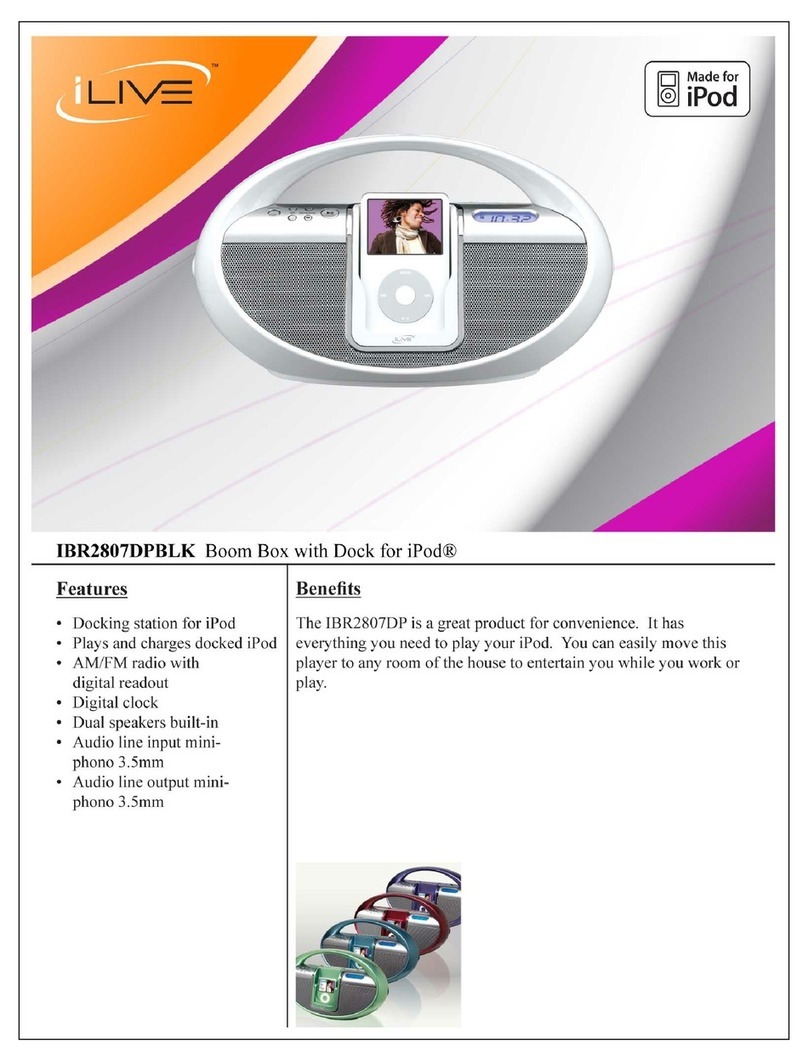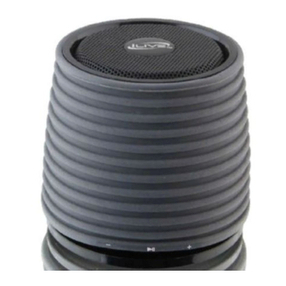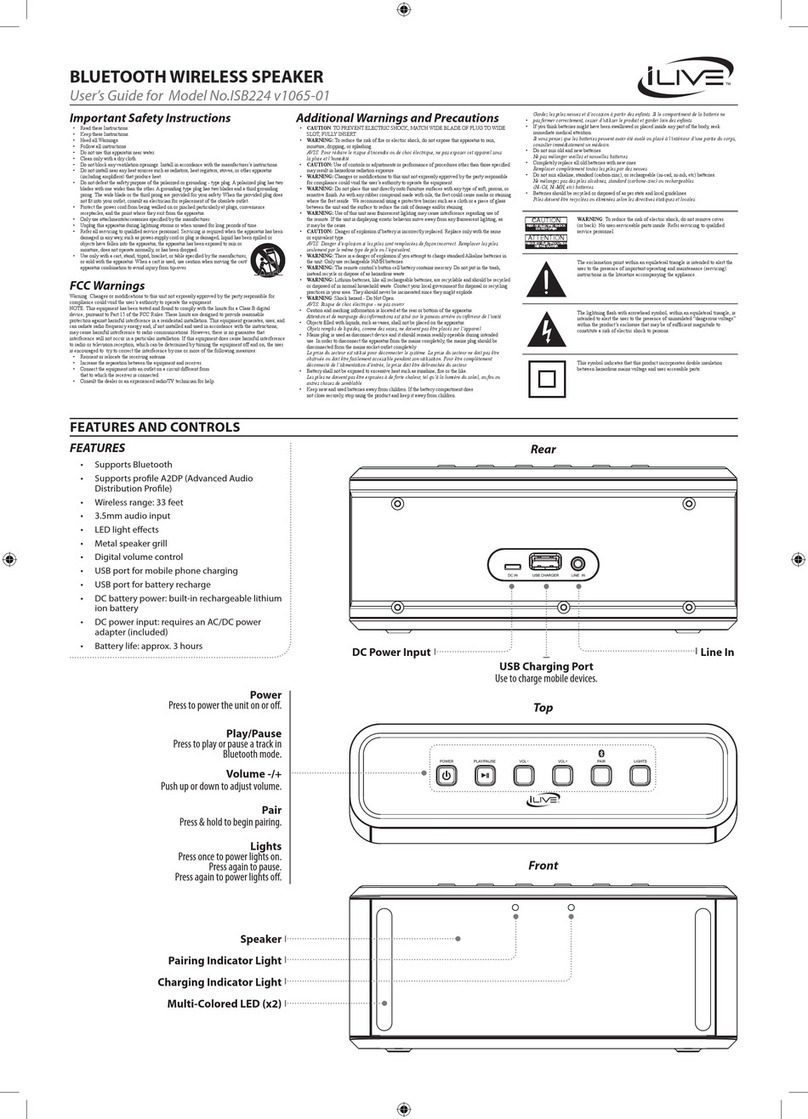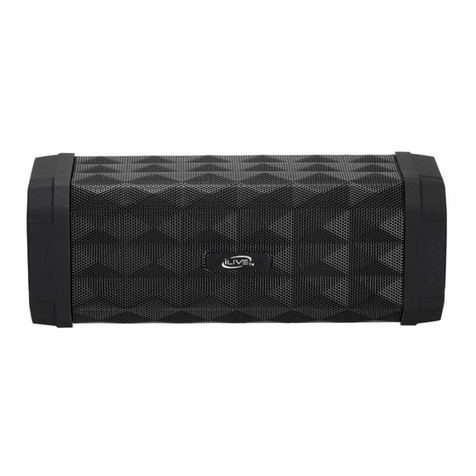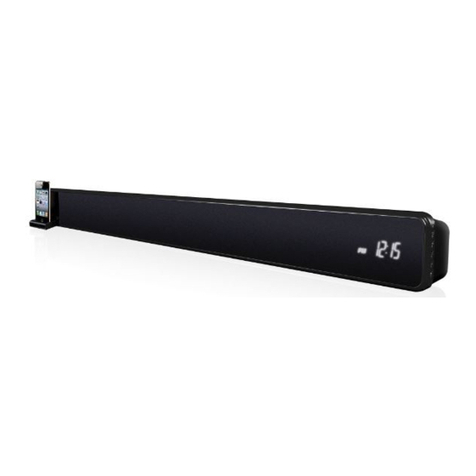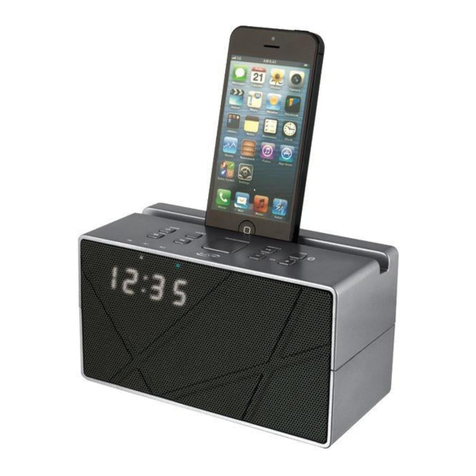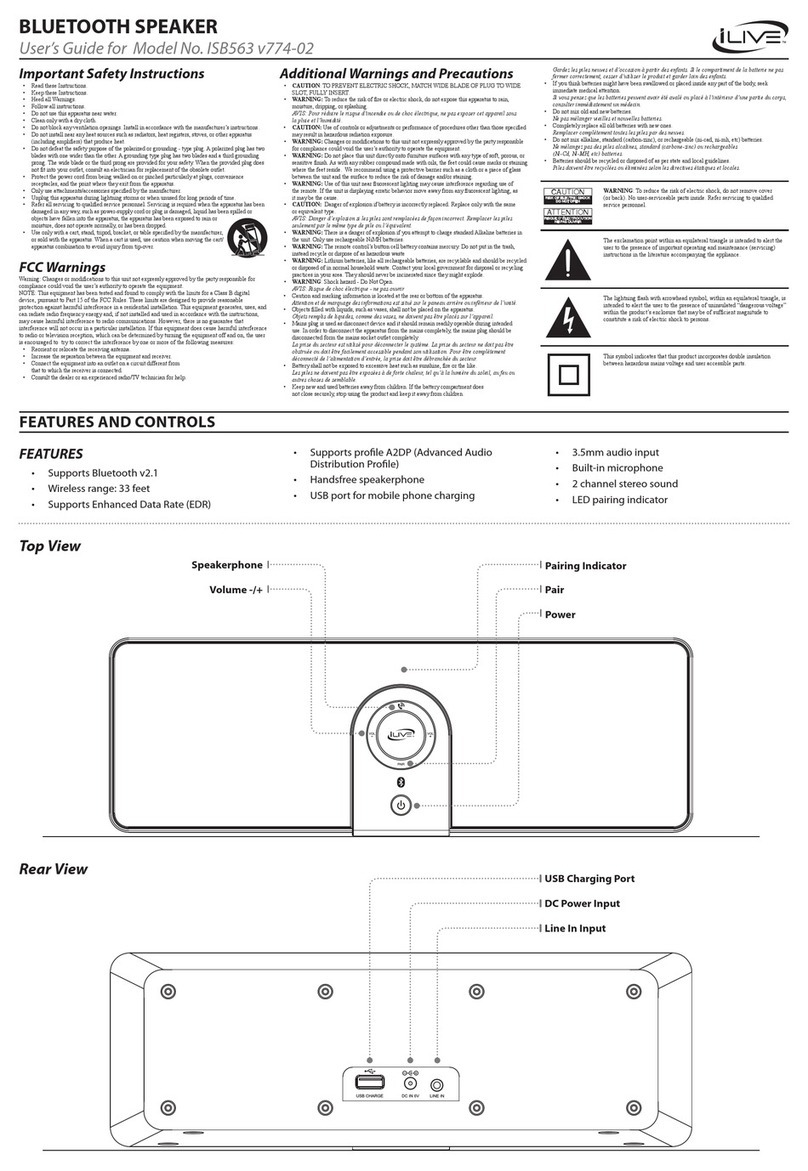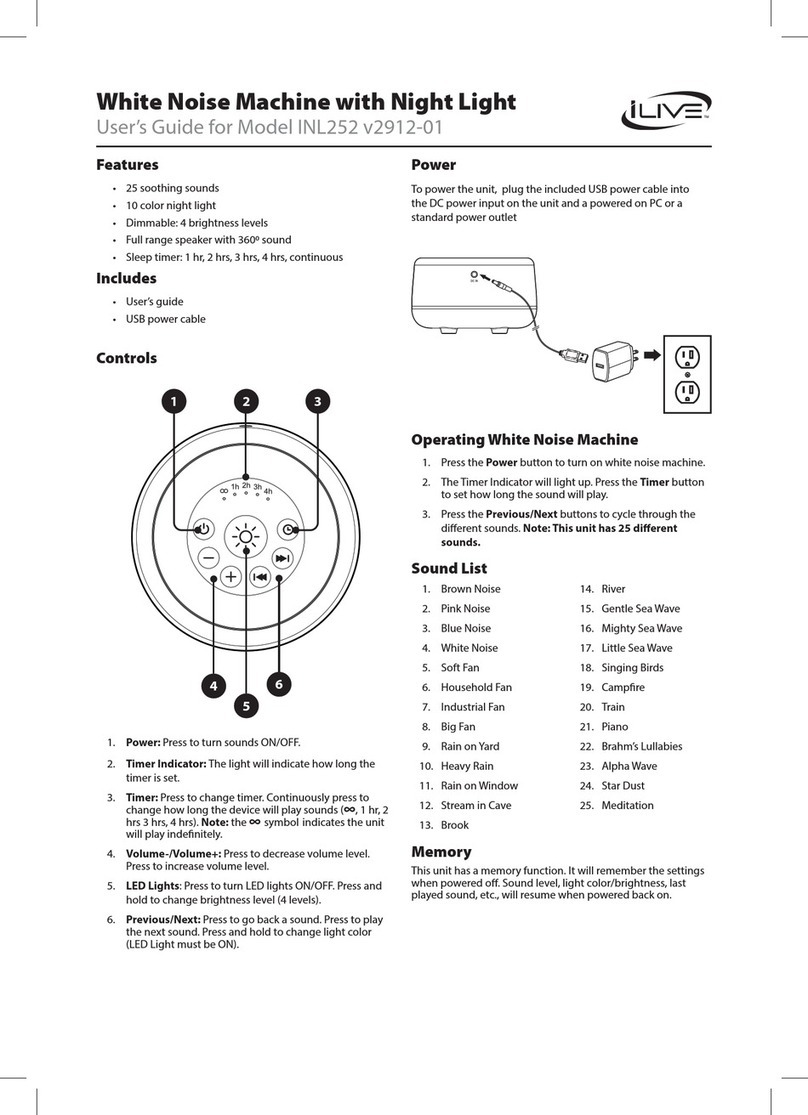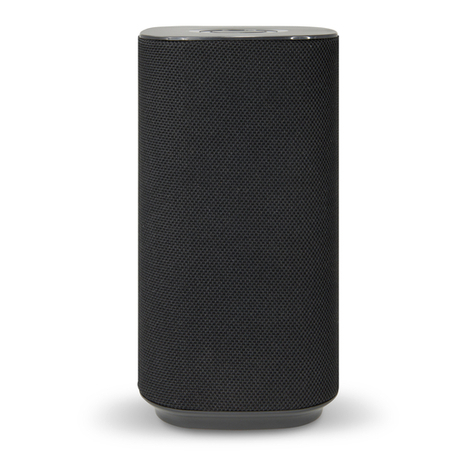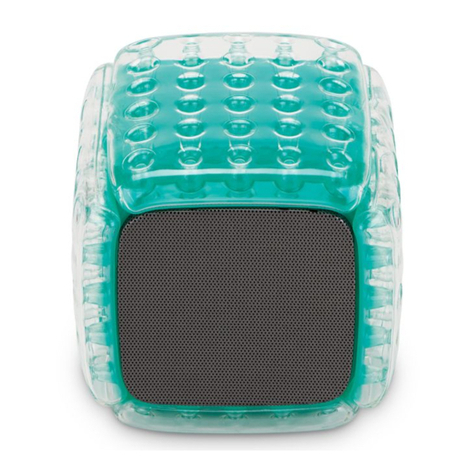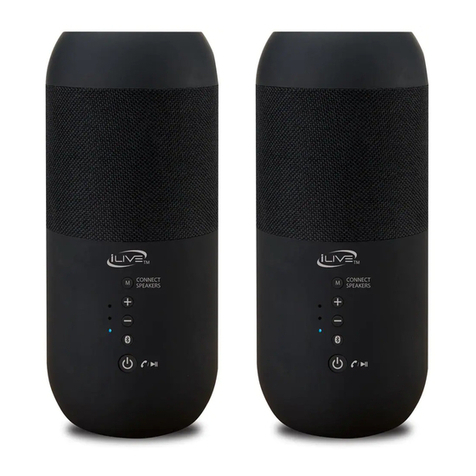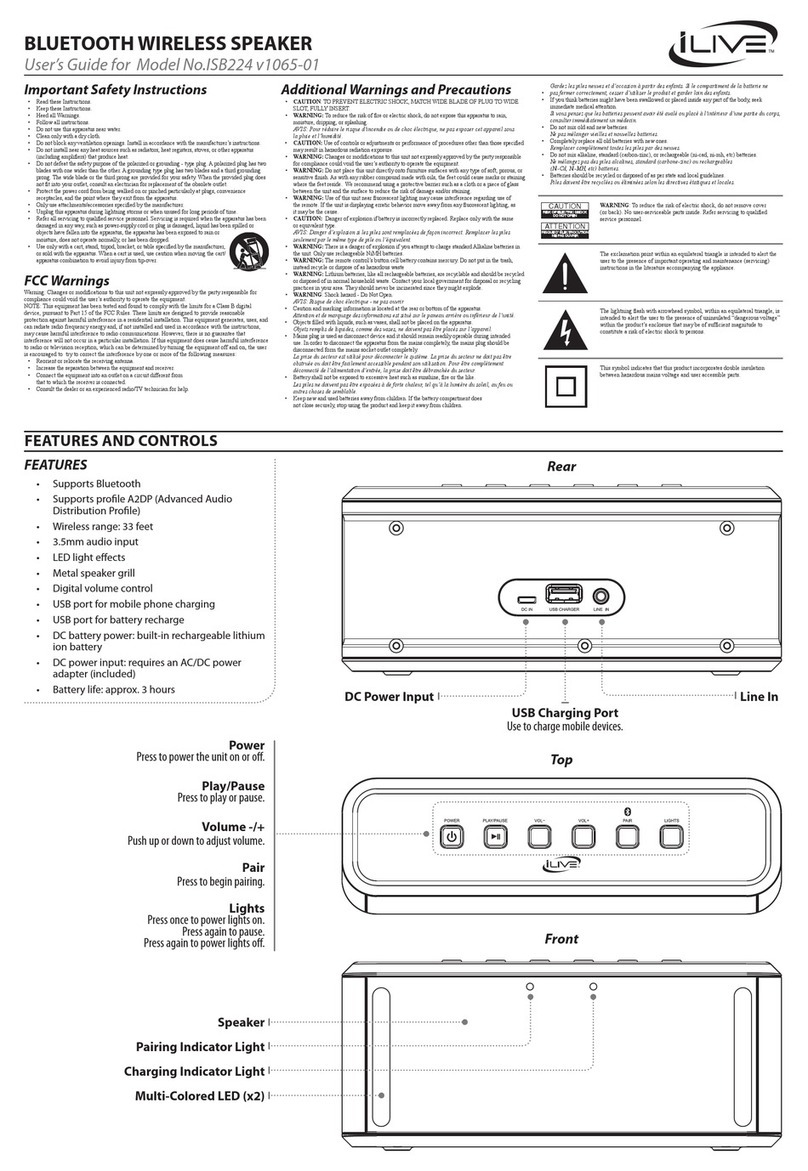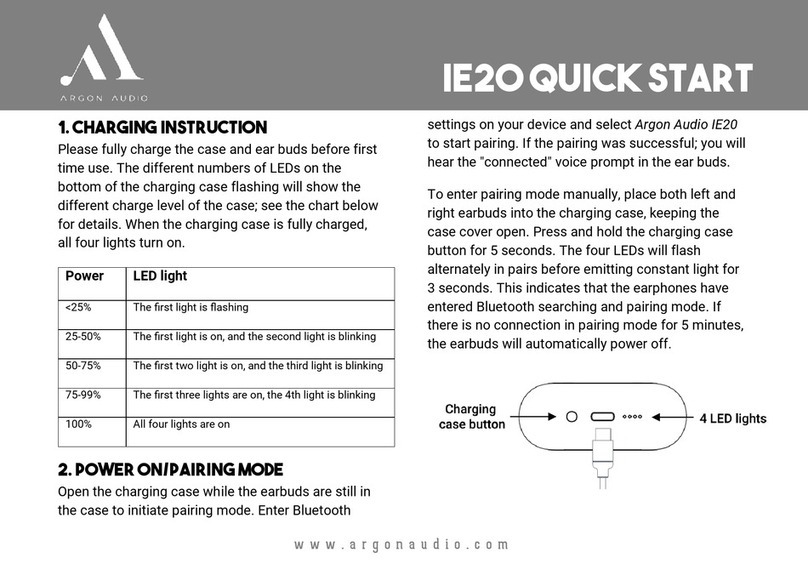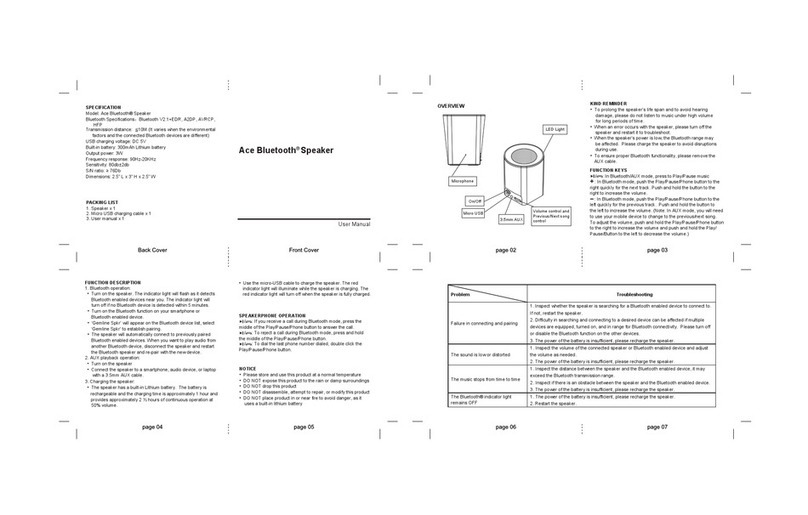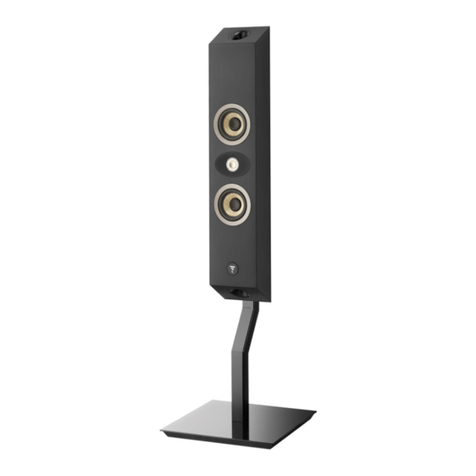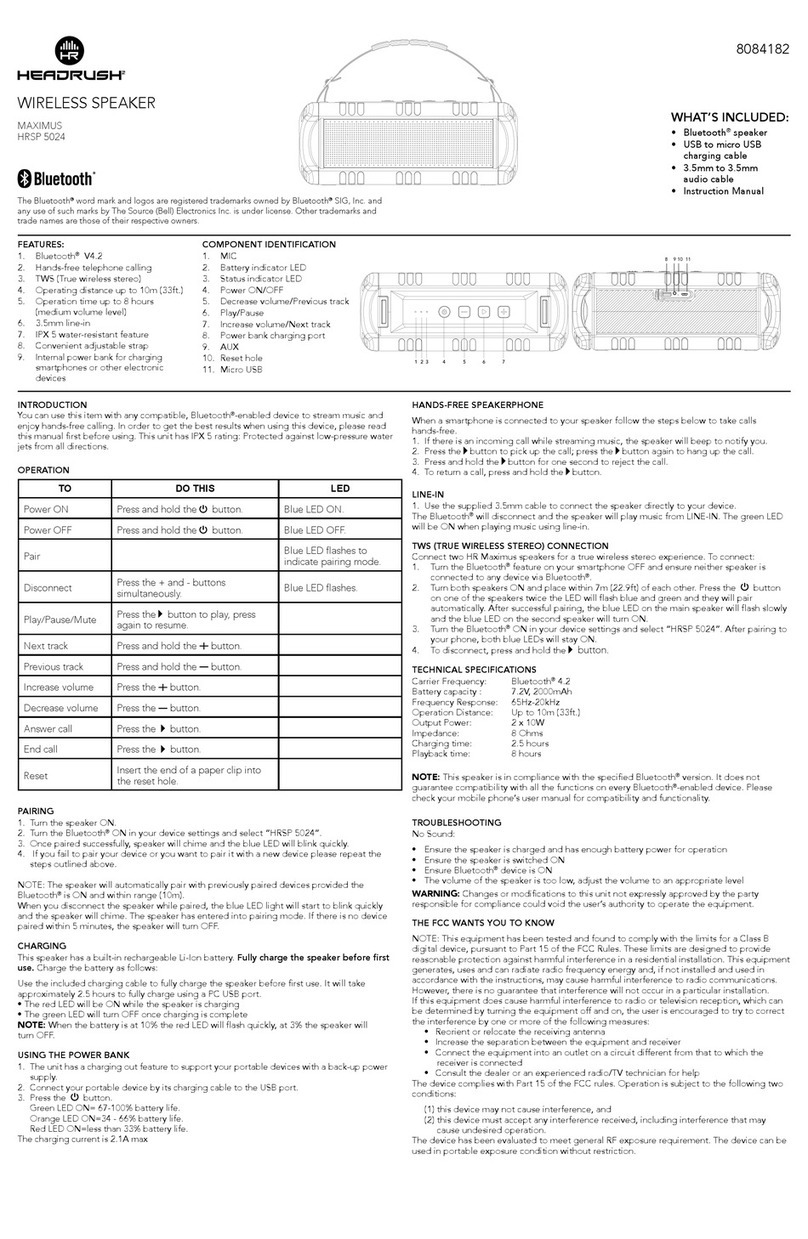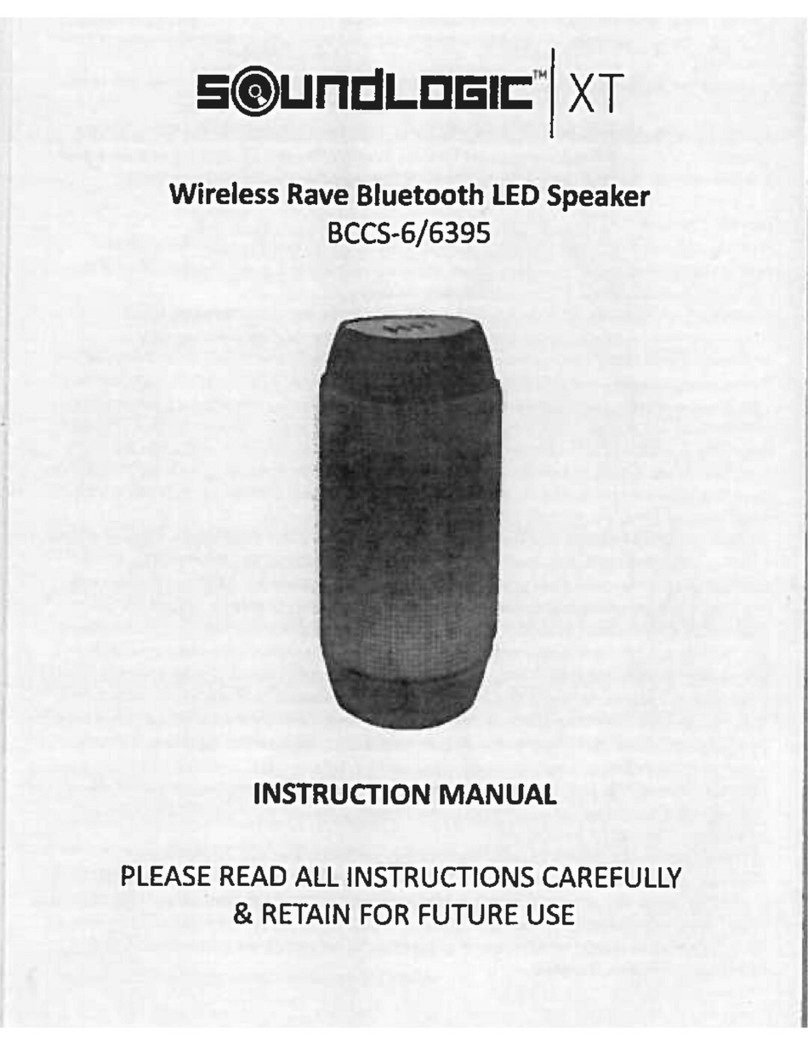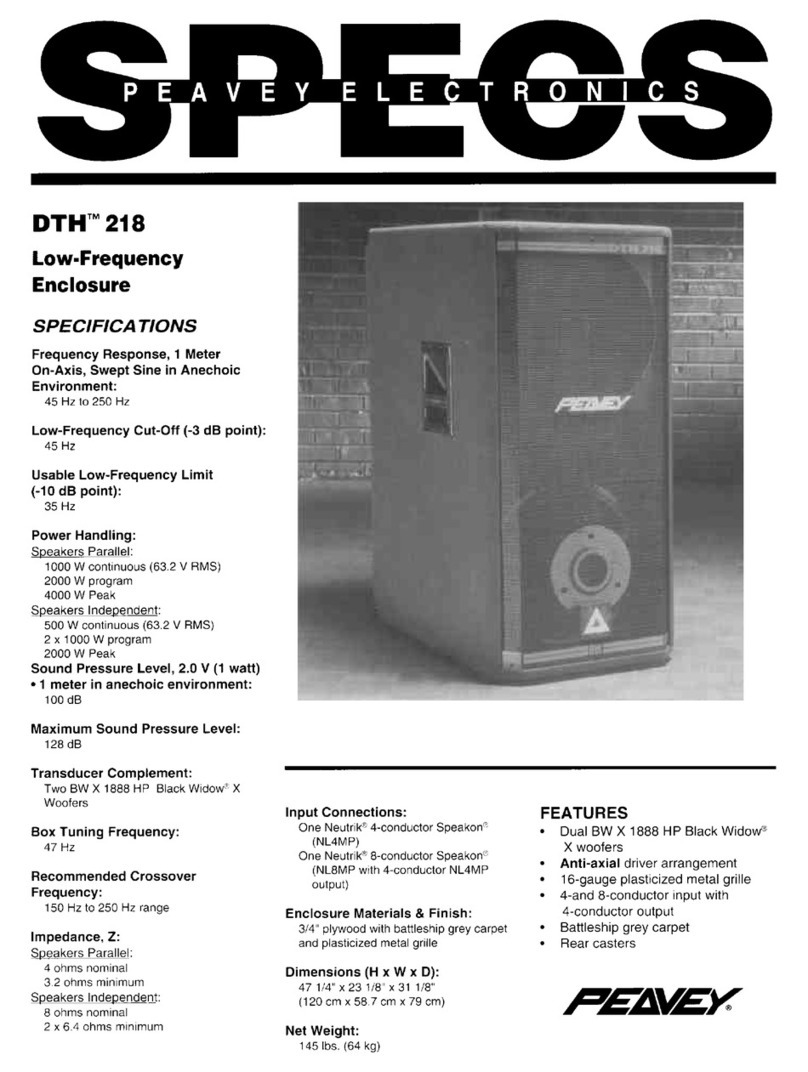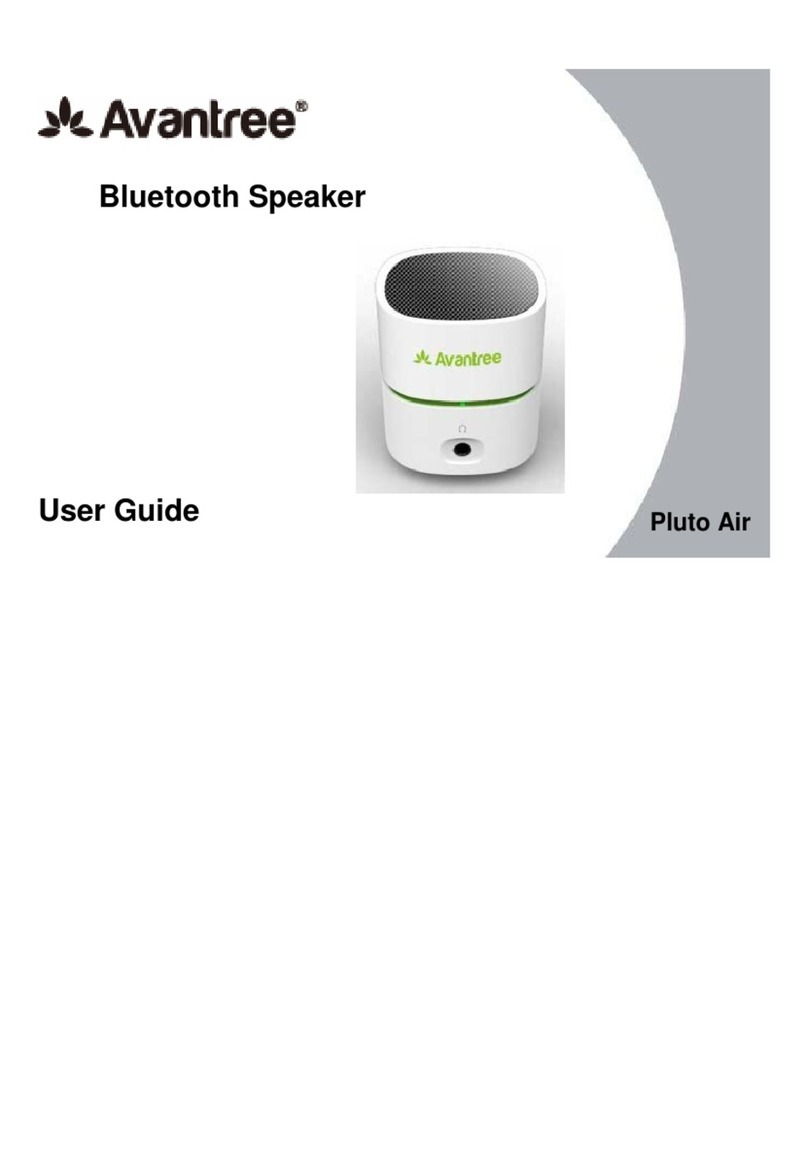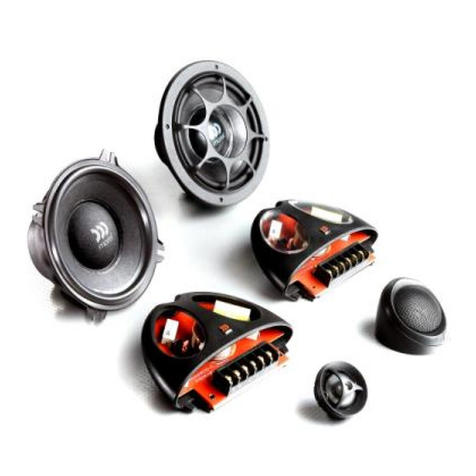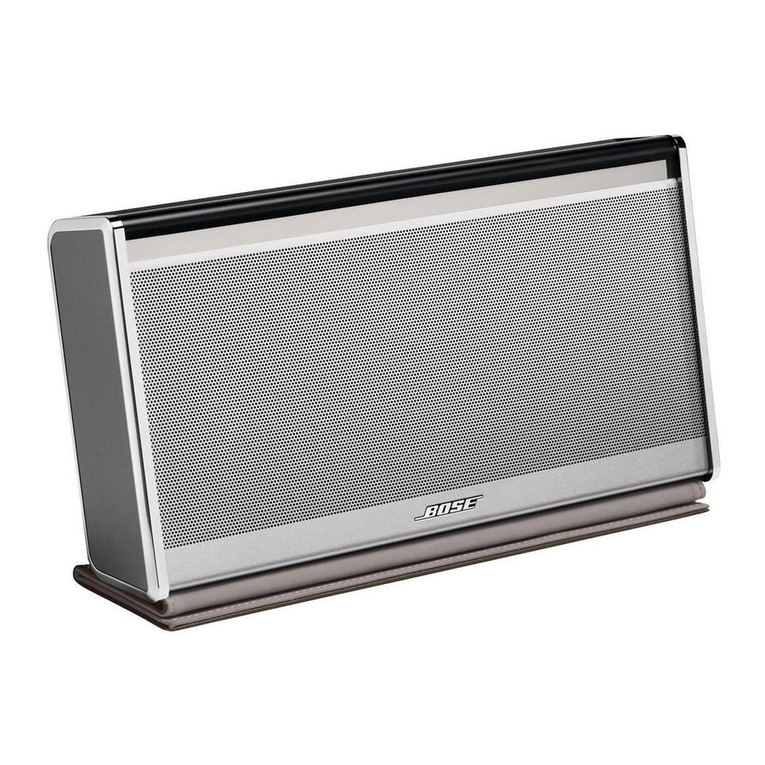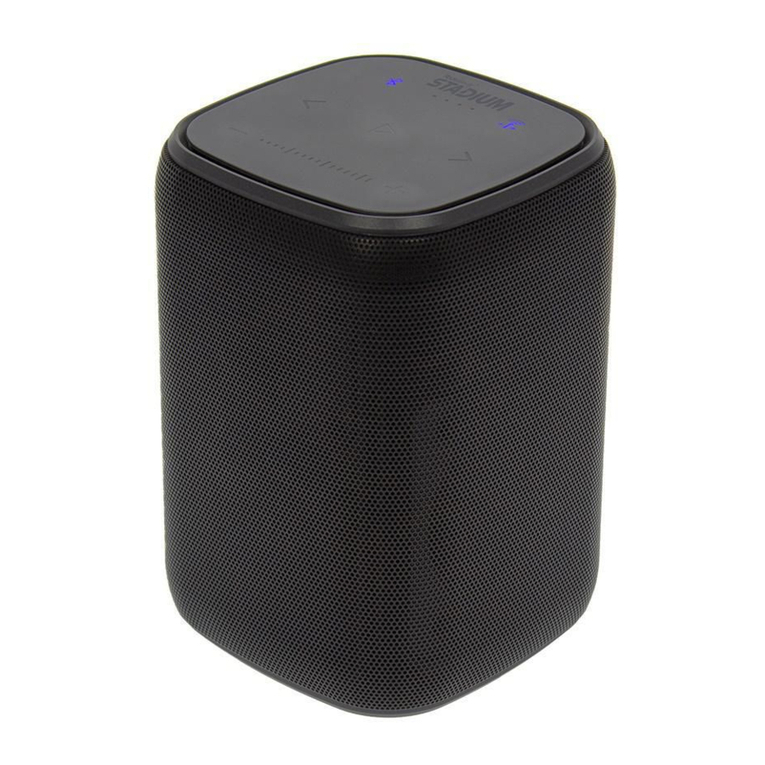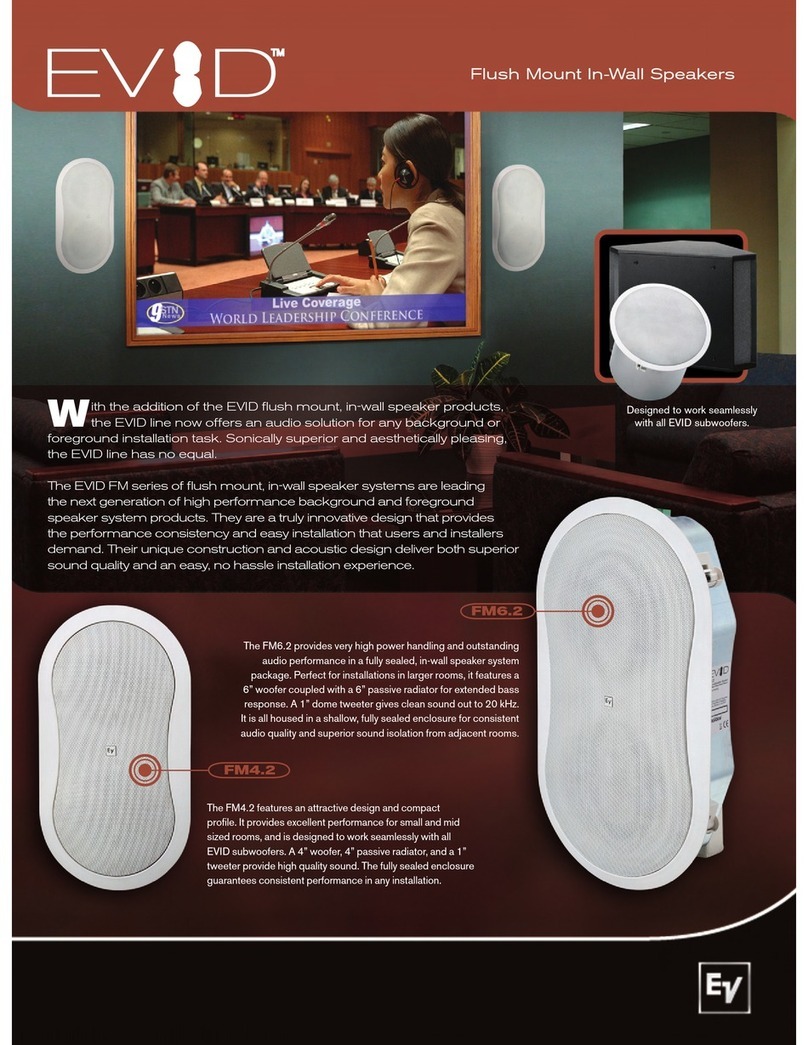FCC Warnings
Warning: Changes or modications to this unit not expressly approved by the party
responsible for compliance could void the user’s authority to operate the equipment.
NOTE: This equipment has been tested and found to comply with the limits for a Class
B digital device, pursuant to Part 15 of the FCC Rules. These limits are designed to
provide reasonable protection against harmful interference in a residential installation.
This equipment generates, uses, and can radiate radio frequency energy and, if not
installed and used in accordance with the instructions, may cause harmful interference
to radio communications. However, there is no guarantee that interference will not occur
in a particular installation. If this equipment does cause harmful interference to radio or
television reception, which can be determined by turning the equipment off and on, the user
is encouraged to try to correct the interference by one or more of the following measures:
• Reorient or relocate the receiving antenna.
• Increase the separation between the equipment and receiver.
• Connect the equipment into an outlet on a circuit different from
that to which the receiver is connected.
• Consult the dealer or an experienced radio/TV technician for help.
Additional Warnings and Precautions
• WARNING: Do not place this unit directly onto furniture surfaces with any type of soft,
porous, or sensitive nish. As with any rubber compound made with oils, the feet could
cause marks or staining where the feet reside. We recommend using a protective barrier
such as a cloth or a piece of glass between the unit and the surface to reduce the risk of
damage and/or staining.
• WARNING: There is a danger of explosion if you attempt to charge standard Alkaline
batteries in the unit. Only use rechargeable NiMH batteries.
• WARNING:Lithium batteries, like all rechargeable batteries, are recyclable and should
be recycled or disposed of in normal household waste. Contact your local government
for disposal or recycling practices in your area. They should never be incinerated since
they might explode.
• WARNING: Shock hazard - Do Not Open.
AVIS: Risque de choc électrique - ne pas ouvrir
• Objects lled with liquids, such as vases, shall not be placed on the apparatus.
Objets remplis de liquides, comme des vases, ne doivent pas être placés sur l’appareil.
• Battery shall not be exposed to excessive heat such as sunshine, re or the like.
Les piles ne doivent pas être exposées à de forte chaleur, tel qu’à la lumière du soleil, au
feu ou autres choses de semblable.
• Keep new and used batteries away from children. If the battery compartment does
not close securely, stop using the product and keep it away from children.
Gardez les piles neuves et d’occasion à partir des enfants. Si le compartiment de la
batterie ne pas fermer correctement, cesser d’utiliser le produit et garder loin des enfants.
• If you think batteries might have been swallowed or placed inside any part of the body,
seek immediate medical attention.
Si vous pensez que les batteries peuvent avoir été avalé ou placé à l’intérieur d’une partie
du corps, consulter immédiatement un médecin.
• Do not mix old and new batteries.
Ne pas mélanger vieilles et nouvelles batteries.
• Completely replace all old batteries with new ones.
Remplacer complètement toutes les piles par des neuves.
• Do not mix alkaline, standard (carbon-zinc), or rechargeable (ni-cad, ni-mh, etc) batteries.
Ne mélangez pas des piles alcalines, standard (carbone-zinc) ou rechargeables
(Ni-Cd, Ni-MH, etc) batteries.
• Batteries should be recycled or disposed of as per state and local guidelines.
Piles doivent être recyclées ou éliminées selon les directives étatiques et locales.
TodownloadthisUser’sGuideinEnglish,Spanish,orFrench,ortogetanswersto
frequentlyaskedquestions,visitthesupportsectionat:
www.iLiveElectronics.com
ParadescargaresteManualdelUsuarioeninglés,españolyfrancés,oparaobtener
respuestasapreguntasfrecuentes,visitelaseccióndeapoyoen:
www.iLiveElectronics.com
Pourtéléchargerceguidedel’utilisateurenanglais,espagnoloufrançais,oupour
obtenirdesréponsesàdesquestionsfréquemmentposées,consultezlarubrique
d’assistancesur:
www.iLiveElectronics.com
ForWarrantyInformationandthemostup-to-dateversionofthisUser’sGuide,go
towww.iLiveElectronics.com
Copyright©2014DigitalProductsInternational(DPI,Inc.)Allothertrademarksappearinghereinarethepropertyoftheir
respectiveowners.Specicationsaresubjecttochangewithoutnotice.
INTERNATIONAL SUPPORT
WARNINGS & PRECAUTIONS
Using the Audio Input
Requiresa3.5mmaudiocable(notincluded).
1. Connecta3.5mmaudiocabletotheLine InInput
ontheunitandtheaudio output/headphone jack
onanaudiodeviceorhomecomputer.The Pairing/
Line In Indicatorwilldisplayasolidbluelight.
2. Usethenativecontrolsontheconnecteddeviceto
playyouraudiothroughtheunit.
LINE IN
BLUETOOTH
Pairing a Bluetooth Device
1. SlidethepowerswitchtoON,andpressandhold
thePair button.ThePairing Indicatorwilldisplay
arapidlyashingbluelight.When pairing, remain
within 3 feet of the unit.
2. UsingthenativecontrolsonyourBluetoothdevice,
selecttheISB64inyourBluetoothsettingstopair.If
yourdevicerequestsapassword,enterthedefault
password0 0 0 0.Refer to the user’s manual for
your specic device for instructions on pairing and
connecting Bluetooth devices. After initial pairing, the
unit will stay paired unless unpaired manually by the
user or erased due to a reset of the device.
3. Whensuccessfullypairedandconnected,abeep
willissuefromtheunitandthe Pairing/Line in
Indicatorwilldisplayasolidbluelight.If your device
should become unpaired or you nd it is unable to
connect, repeat the above steps.
Playing Audio Wirelessly
1. Toplayorpauseaselectedtrack,usethenative
controlsontheconnectedBluetoothDevice.
2. AudioplayedthroughtheconnectedBluetooth
devicewillnowbeheardthroughthespeaker.
